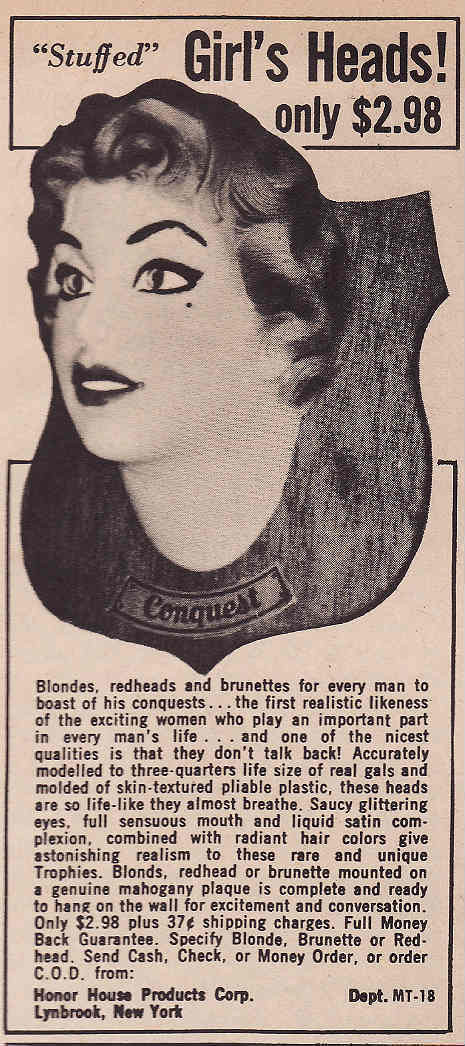Girls, girls, girls
Morrison and Buck on every would-be Miss America

Yedda Morrison, girl scout nation (Displaced Press, 2008), 100 pp.; Marie Buck, Life & Style (Patrick Lovelace Editions, 2009), 54 pp.—How do you make a girl? In their different ways, these two books address that question. Divided into three individually paginated sections, Yedda Morrison’s book functions as a kind of triptych. Drawing on the 1956 Girl Scout Pocket Songbook, a publication as essential to the Cold War doctrine of containment as the 1920 handbook Scouting for Girls had been for the first “Red” scare after the 1917 October revolution, Morrison links the formation of “character” in young American girls with the domestication of nature. The subtext is the threat of the stranger, but if the "stranger" lies within a “girl,” a nation, the mobilization of girls as girl scouts enhances both security and risk. An individual "Girl" may be demobilized, even killed, but “Scout” survives, however precariously, as an idea and value, as abstract and act. Morrison tracks this narrative by demonstrating that narrative itself is, like language, a kind of tracking, a hunt-and-kill strategy. As part of this process, the taming of shrews—be they an “invasive species” of plant as demonstrated in the Laura Bush section of the triptych, “dominion pollen,” or a ”Scout [who] raises her fist in a tiny plume of defiance”—is not only inextricable from the violence visited upon both but, in fact, serves as the foundation for the history of narrative, the narrative of history, as the “Hunter.” On the other hand, on a smaller scale, Marie Buck, in Life & Style, takes a detour through what Morrison recognizes as “a literary stain still at the edge of the book,” appropriating and revising canonical poets and poems from Dickinson to Yeats. As its punning title (for those who recall the infotainment show, Lifestyles of the Rich and Famous) suggests, Buck’s book also links the development of “girls” to institutional structures, but unlike Morrison’s argument that nature and girls are two sides of the same devalued coin, Buck wants to show that the canonized poet and Hollywood celebrity merely offer different routes to the same end: girls grow up to become, and remain, girls. In that sense, Life & Style is (somewhat) more pessimistic than girl scout nation since the former puts the lie to neutral, equalizing “professionalism,” be it an effect of literary history or the Hollywood star system. But if girl scout nation is slightly less pessimistic than Life & Style, that may be because the former’s scale of indictment amounts to a class, if not gender-, action/act that is never co-extensive with any particular “girl”: “Scout'remains are written here and Scout remains are scattered/the animated social material of a limping historical moment/and as its blood soaked film she spreads/this hard won badge of deviance.” This stanza is near the beginning of the third section, titled “the idea of Wildness.” Its emphasis on the idea justifies the optimism of the will even if Morrison’s pessimistic intellect cannot avoid asking the hard questions: “but how will we know the hood/that of the nation or its drab little mate/as an essential form in the total catastrophe/that is first and foremost/ a physical ACT…” This passage appears near the beginning of what is, for me, the most dynamic, fiercest, section, and its title, “jane doe/live girls!/ woodlands,” says it all. I take the strikethrough as both a stroke of defiance and necessary condition of anonymity and abstraction, for while these “values” are precisely the undercarriage of objectification, they are also the conditions for Morrison’s generalizing of the “nation.” The primary (but hardly exclusive) culprit here is language itself, and the long lists of noun, verb and prepositional phrases she provides have the cumulative effect of shock troops invading a wilderness or, as Buck’s book suggests, domestication as social/media saturation. Yet that “hard won deviance” is also the other side of the girl scouts, the attempt to prove to men and women, boys and girls, that girls can do the same things as men and boys. However,as Life & Style argues, going to school is not that different from being taken to school, from being schooled. Appropriating poem titles from Dickinson (many of the poems are simply named after the numbers of the Amherst poet’s catalogue), Baudelaire (“Correspondances”), Yeats (“The Lake Isle of Innisfree”) and others, as well as paying homage to Britney Spears, Nicole Ritchie, Jennifer Connelly and other women celebrities, Buck’s pithy, Generation X rhetoric offers a humorous, though deadly serious, take on Americana as pale approximations of European culture. Here is the opening stanza of “Au Cabaret-Vert”: “The day I GET A BEST-DRESSED AWARD/Will be the day I curse. I was cruising/Around Temple aimlessly—Au Cabaret-Vert,/Budweiser, Crisco, Peanut Butter on the wall.” But , snarkiness aside, this book is all about the physical appearances of celebrity women, the genius of great poets, and the attempts on the part of the narrator to measure up. In this regard, Buck turns the tables in at least two poems, “4 Smooth Bot (Parallax the Hatched” and “16 Aphorism Contest,” where she imagines verbal—not beauty—contests: “Mischa Lindsay Washington: Bird you worm through early/the case of this wanf/dress Vera three months/Kerry before Lindsay//72% of readers polled prefer Kerry.” Just as Scout remains subject to the purview of Hunter in girl scout nation, so too Life & Style shows how the sop to intelligence within the structures of spectacle (permit me to cite this line from On Spec:" a lovely and talented chemist...") or the literary still presupposes that, when all is seen and said, women are still (just) girls.
Hunches, hedges, etc.